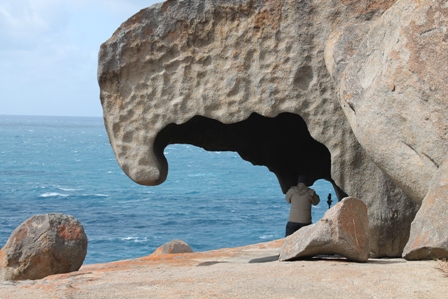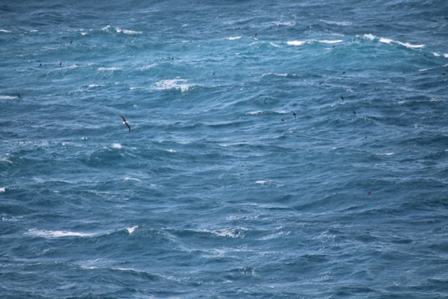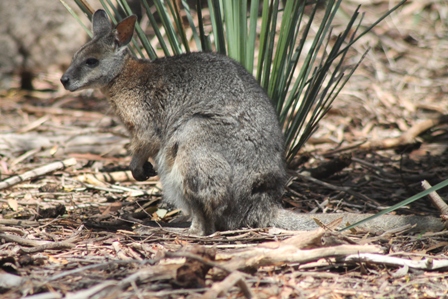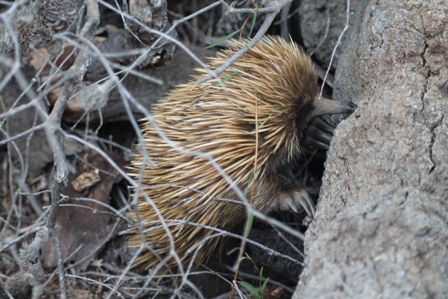
Seawatching from Remarkable Rocks, Kangaroo Island, 11/10/12 (Dominic Couzens)
11th October 2012
The strong south-east wind blowing off the Antarctic this morning ensured two things: cold and breezy conditions, and potentially sensational seawatching. Our admirable guide Chris Baxter (affectionately known as Kangaroo Island’s “Bird Man”) recognised obsessive compulsives when he saw them, and suggested that we pay a group visit to Admiral’s Arch, a suitably blowy headland in the west of the island, in Flinders Chase National Park. Immediately it became apparent that spectacular movements were underway. Hordes of Short-tailed Shearwaters were streaming past, and among them were lots of Shy

Seawatching heaven - Short-tailed Shearwaters and Shy Albatross, off Flinders Chase NP, KI, 11/10/12(Dominic Couzens)
Albatrosses (we notched up at least 40). The albatrosses were approaching to distances of only about 400m, sensational for land-based seawatching. It should be said that Short-tailed Shearwaters are not the sort of bird easily to be upstaged; they have the distinction of making the longest foraging trips to get food for the young of any species in the world. They may travel 14,000km between Australia and Antarctica just to do their ” food shopping”. And this morning they were passing in astonishing numbers, Ray Tipper recording totals of between 280 and 410 birds per minute. That, you know, is quite a lot.
For those who care about such things, on this seawatch we also recorded 2 Black-browed Albatrosses, 1 Great-winged and 1 White-chinned Petrel, and a Skua (probably South Polar). For those who are much more normal human beings, this might also be a pertinent place to record that, after the seawatch we had a sit-down meal, where Chris barbecued some beef, and we had a full salad, with olives and other delicacies, plus a choice of wine and beer (or both). I would not like you to think that people who stand for hours in the teeth of Antarctic gales are immune to the finer things of life.
Chris Baxter might have fed us enough to give us the figure of the New Zealand Fur Seals that were frolicking in the turbulent waters at Admiral’s Arch, but by now he was becoming twitchy about certain Kangaroo Island must-sees that we hadn’t yet seen, not least the Tammar Wallaby. This animal is relatively abundant on Kangaroo Island

Tammar Wallaby, Flinders Chase NP, KI, 11/10/12 (Dominic Couzens)
but very rare elsewhere. Happily, this species was duly bagged (that is, spotted, not literally bagged in the Southern Hairy-nosed Wombat sense) by taking a visit to the nearest caravan park, where there were plenty of wallabies in the adjoining scrub, not the caravans of course. There were also many birds at this site, including Rainbow Lorikeets, Cape Barren Geese, Shining Bronze-Cuckoo and a male Superb Fairywren that was photographed about 1000 times by the five of us.
The other star mammal we finally managed to track down late in the afternoon, courtesy of a young German couple who had stopped on the side of the road next to an Echidna (I’m not sure how you find one without a German couple, but doubtless you can). This glorious animal, which looks like a hedgehog on steroids, has the distinction of being one of just two types of mammal in the world to lay eggs – the other is the Platypus. It is also the most widely distributed land mammal in Australia. This particular individual turned out to be exceptionally confiding, ending our wildlife watching on Kangaroo Island in truly close-up style.

Echidna, Kangaroo Island, SA, 11/10/12 (Dominic Couzens)
